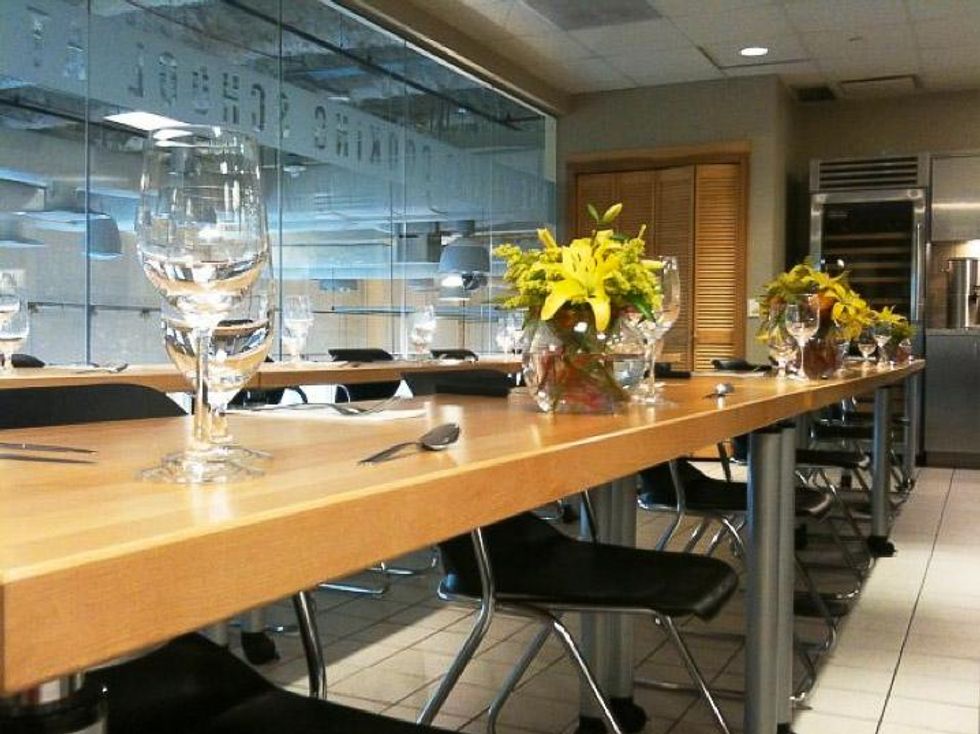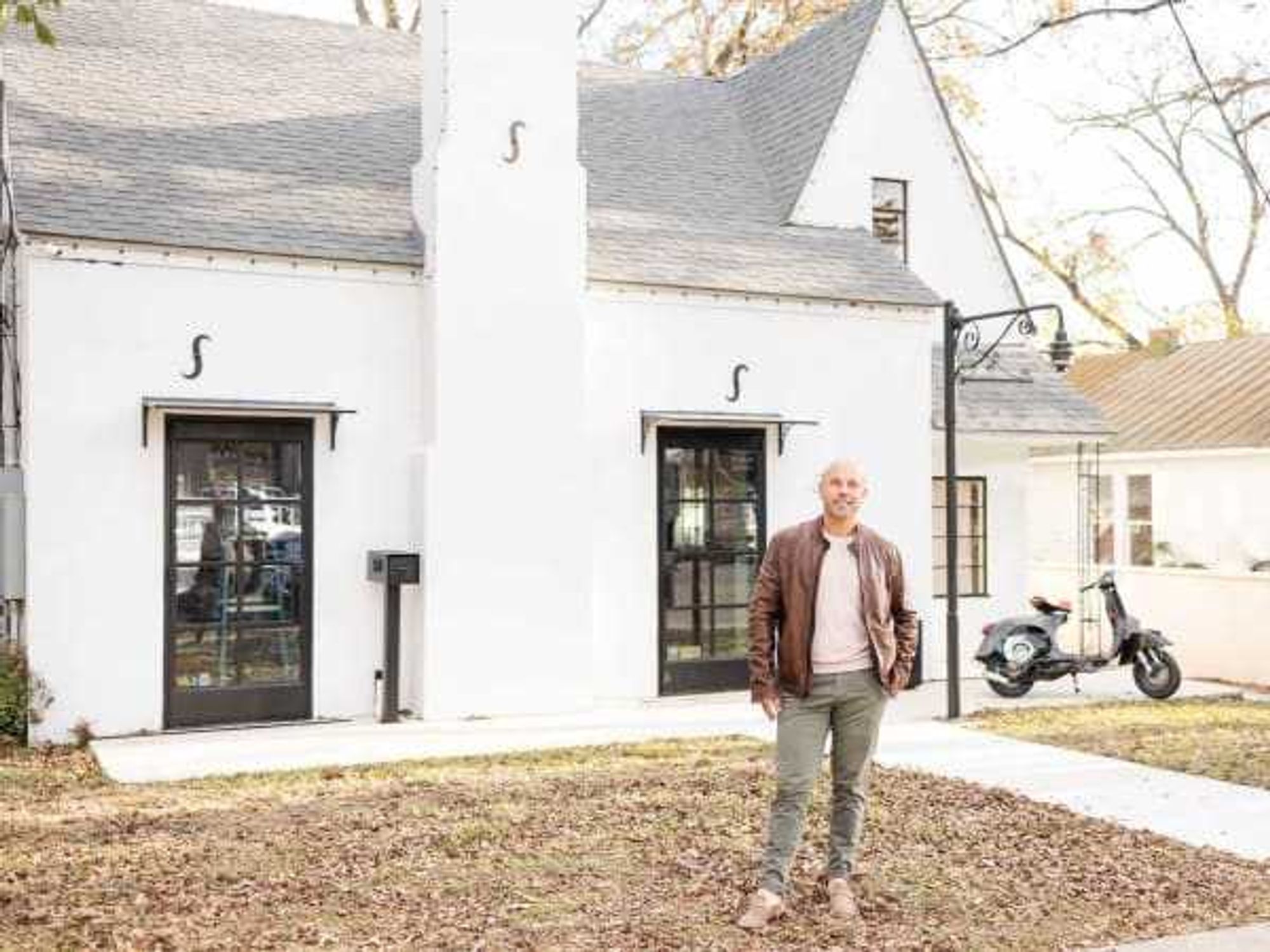To the Woodlands with crust
Going to holiday pie school: Avoiding shrinkage and perfecting a topping jiggle

The intensity in preparing a made-from-scratch crust with bare hands and mounds of butter has always simultaneously delighted and intimidated me. It’s one of the reasons I’ve never cheated on pie with its overhyped rival: Cake
For my birthday, it’s pie only or sayonara suckers. No birthday cake could trump the gooey, unctuous fillings housed in a delicate case of flaky, browned butter crust. No matter the topping — whipped cream, meringue, none or lattice — they’re all equally superior to that crumb-creating mound of blah that I refuse to blow candles off every year in August.
It’s this extreme love for my pastry obsession that drove me to undertake a little counseling in the form of a holiday pie class at the Viking Cooking School in the very East-coast-feeling gourmet food destination of Hubbell & Hudson Market & Bistro in the Woodlands.
I was on a mission to conquer my crust creating inadequacies and prove to pie that I was worthy of our forever union. Leaving all my trepidation at the wraparound glass surrounding the Viking show kitchen on the second floor of the market, overlooking the bustling crowd at the Hubbell & Hudson checkout counters, it was time to begin treating pie like it truly deserved, and just in time for the holidays.
The class started off with a few ladies and one very fun dad and his young daughter (it was part of her birthday celebration) getting the safety and health debrief from instructor and pastry chef Brandy Graesser. Hand washing was stressed as being important and something about aprons not going to the bathroom along with us. Easy enough, but I was ready to get my hands dirty.
Next, it was time for the pie crust demonstration. I was crushed as we learned that we, in fact, would not be making pie crust from scratch and that it had already been done for us. Something I’d never known, and had contributed to my crust downfalls, was the tip that pie crust needs to rest in a cool area for at least an hour to allow the gluten in the flour to fully develop. What a fickle, delicate pastry lad I’ve pledged my allegiance too.
Secondly, we learned that pie crust always needs an acid; lemon juice, vodka (I know, right?), apple cider, vinegar, and whatever else you might have on hand. For the pie crust demonstration, Chef Graesser used sour cream. I was intrigued already as I learned an acid will keep the gluten from overdeveloping — keeping your crust light and flaky and decreasing shrinkage.
Pulsing all the ingredients lightly in one of the immensely-better-than-mine Viking food processors, the butter blended with the pastry flour and, eventually so did the eggs and sour cream. The end result was a crumbly, but combined mass of ingredients lightly formed into a disk and surrounded by plastic wrap, not the greasy ball of dough that always ended up on my counter at the end of my former efforts.
Ten minutes into the class and I was already being schooled into my new way of pastry life.
By the magic of some intense preparation on the part of Chef Graesser, nine disks of cold dough emerged from the giant refrigerator inside the kitchen and onto little prep stations on the huge granite island. We politely and timidly stepped up to the silicon mats and watched a demonstration of how to show that cold dough who’s boss. While dough's delicate in the blending area, it’s OK to put some good, old-fashioned elbow grease into that lightly floured roller and go to town.
Apparently, pie dough is a bit of a masochist in this area of preparation.
Beaming (or gloating) with pride after I rolled my dough into the perfect thickness and placed it gently and confidently into the pie pan, it was time to get the filling into my unfinished masterpiece.
Graesser had the ingredients conveniently lined up and ready to go after our pie shells were once again, placed into the refrigerator to keep them cool as we made the filling for the chocolate pecan pie that we would have the pleasure of taking home after class.
Using pecan halves, molasses mixed with light corn syrup, vanilla, semi-sweet chocolate, melted butter and eggs, we whisked, melted and whisked again until our sweet combination was a brown puddle of goo. Fetching our cooled pie crusts, we then placed the pecans directly into the pie shell and then poured the mixture over the top, a secret technique revealed by our gracious instructor.
Covered in flour and anticipating the big reveal of our very own handmade pies in a mere 40 minutes out of the fancy Viking ovens, we split up into groups and began the preparation of a Kahlua pumpkin pie made with half pumpkin and half pumpkin butter — a brilliant and tasty variation of the classic custard pie.
Three or four of us per group, we took turns rolling out the dough, mixing the filling and prepping the pie for its vacation to the warmer temperatures of the massive ovens.
With the aromas of chocolate, pecans, pumpkin and spices wafting through the air and two (hopefully) successful pies baking away in the oven to our credit, we took the remaining pie dough and Graesser gave us the run down on creating lattice tops.
Any leftover dough is rolled out with strength and without reservations and then cut into one-inch strips and braided into the classically decorative pattern. It was easier than I thought. I liked this new path to pastry happiness.
After a few questions and offering of coffee, tea, water or wine, we learned the rule of jiggle, and it had nothing to do with Kim Kardashian’s backside. To judge the doneness of a pie, look not only at the browning of the crust, but also the jiggle of the filling. While this won’t work with apple or fruit pies, it will with custard or other fillings pies like the pecan we’d made.
With all the pies jiggle-free and perfectly browned, they were removed with care from the ovens and laid to rest, to cool for our consumption.
The pies were then cut and passed along to the patient, but salivating students. The room grew silent as we all quietly pleasured in the warm, gooey slices with the delicately tender, flaky crusts and contemplated which pies we’d brave in our own, comparatively depressing kitchens (at least in my case) in silence.
We boxed our own chocolate pecan pies and thanked Graesser for her instruction and candor and headed out the door. I walked with an extra swagger holding my finished product proudly, careful not to bump into any of the people in the market below and risk disturbing that flaky crust I had so confidently rolled into submission.
There’s hope for my future with pie, and I have a newfound confidence that our union will last a very long time, thanks to Chef Graesser and her mad pastry skills.
Editor's note: Which holiday pie reigns supreme? Cast your vote in our latest CulturePoll to give your favorite crust concotion a chance.

